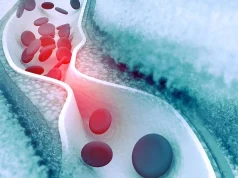Diagnosis of schizophrenia, length of stay of 90 days or more are strongest predictors of polypharmacy
FRIDAY, July 22, 2016 (HealthDay News) — Among adult patients discharged from state psychiatric inpatient hospitals, the prevalence of antipsychotic polypharmacy is 12 percent, according to a study published in the July issue of the Journal of Psychiatric Practice.
Glorimar Ortiz, from the National Association of State Mental Health Program Directors Research Institute in Falls Church, Va., and colleagues conducted a cross-sectional study of all discharges for adult patients (aged 18 to 64 years) from state psychiatric inpatient hospitals. Predictors of antipsychotic polypharmacy were examined.
The researchers found that antipsychotic polypharmacy had a prevalence of 12 percent. Eighteen percent of the discharged patients receiving at least one antipsychotic medication were on antipsychotic polypharmacy. Having a diagnosis of schizophrenia and a length of stay of 90 days or more were the strongest predictors of polypharmacy. Antipsychotic polypharmacy was mainly prescribed to reduce symptoms.
“Antipsychotic polypharmacy continues at a high enough rate to affect nearly 10,000 patients with a diagnosis of schizophrenia each year in state psychiatric inpatient hospitals,” the authors write. “Further analysis of the clinical presentation of these patients may highlight particular aspects of the illness and its previous treatment that are contributing to practices outside the best-practice guideline.”
Full Text
Copyright © 2016 HealthDay. All rights reserved.








